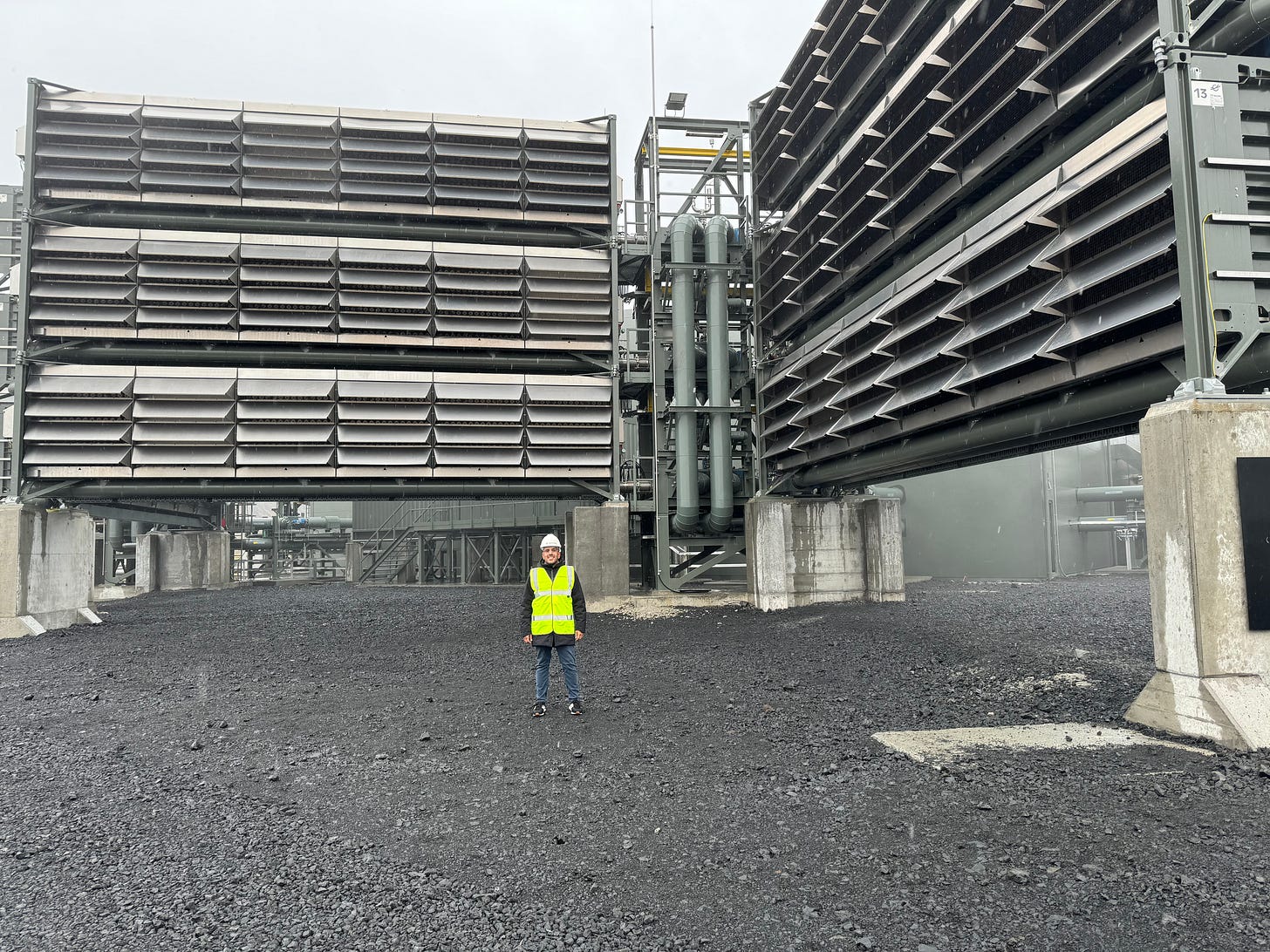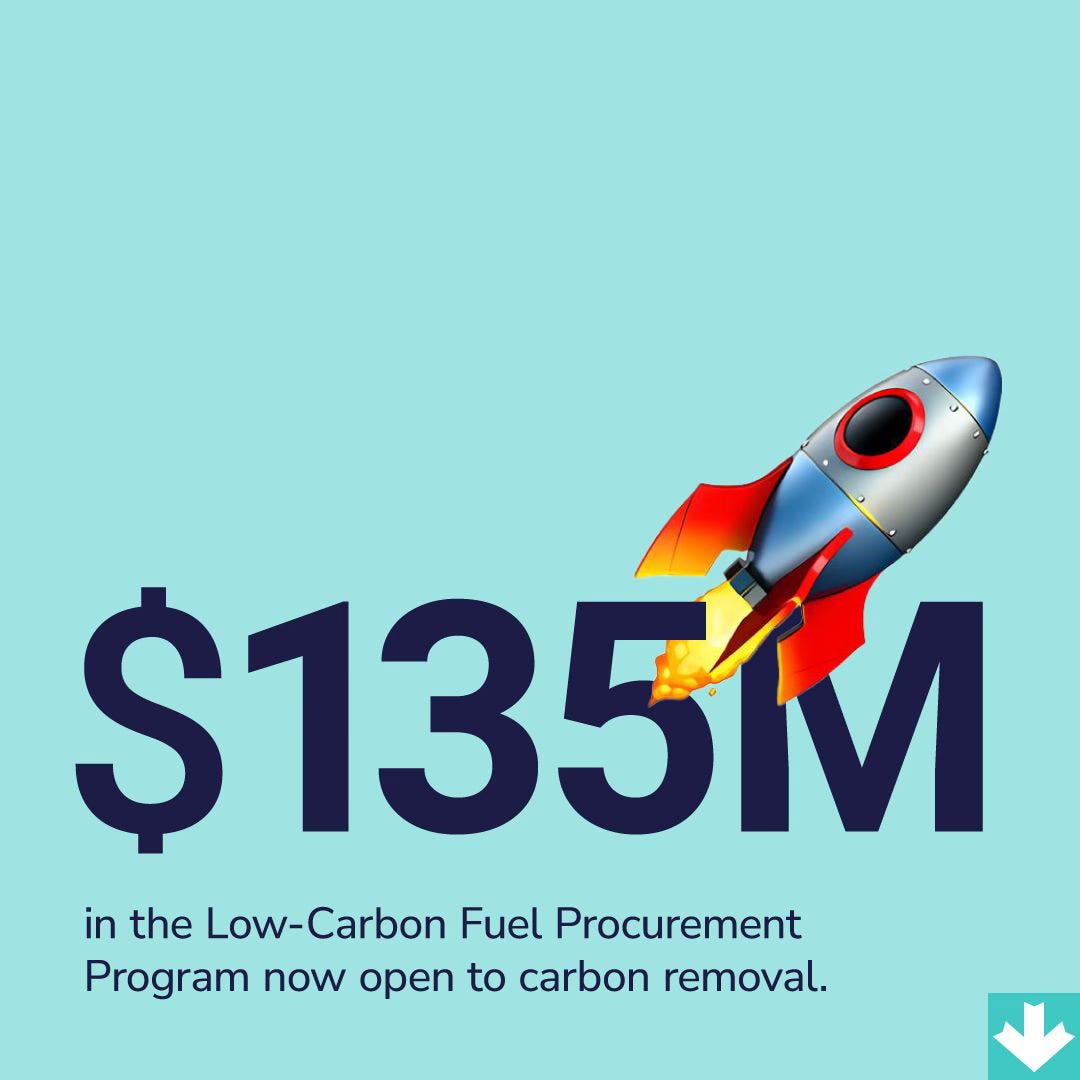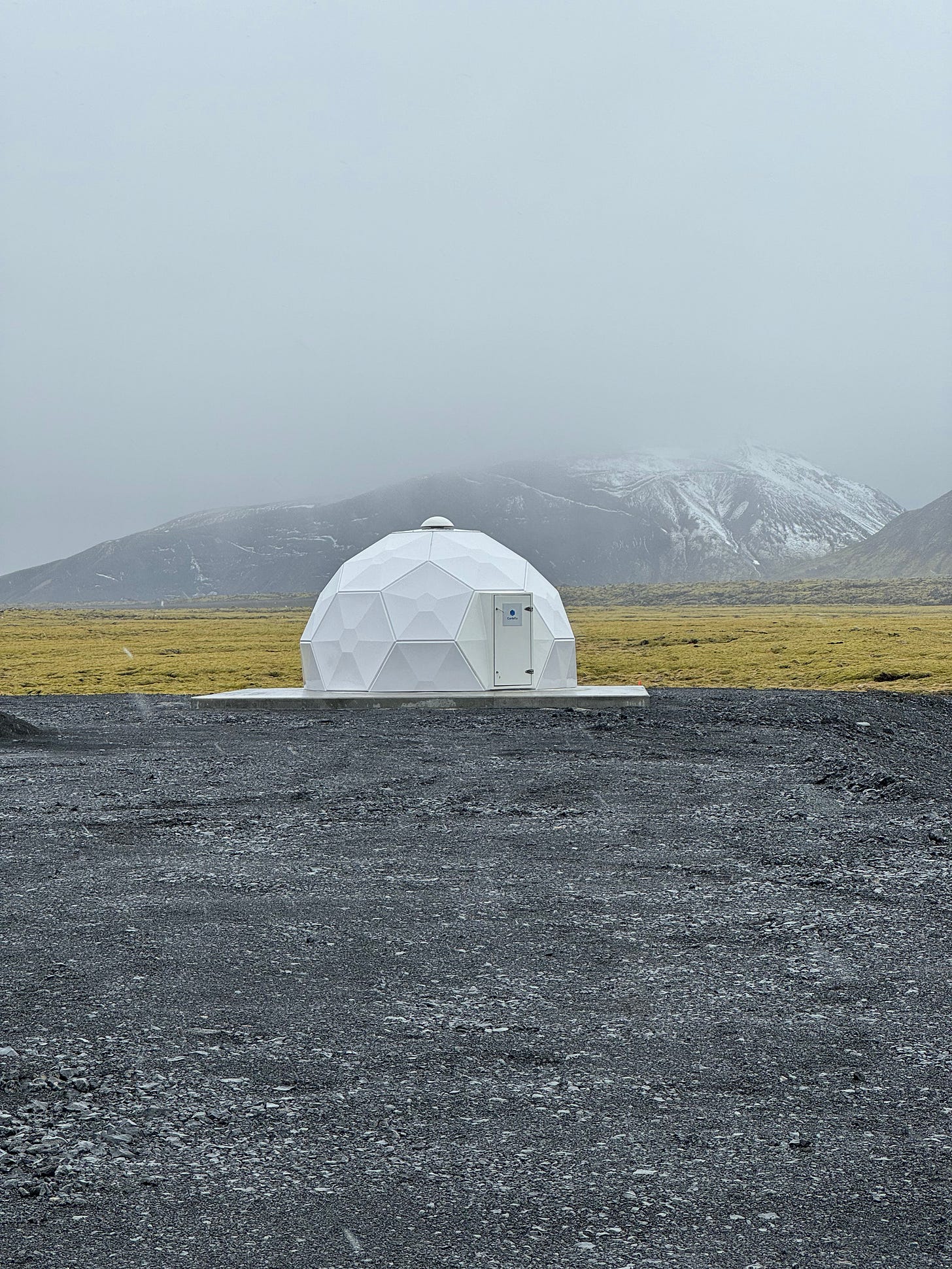We have come a long way. We have a long way to go.
Reflecting on the unveiling of Climeworks' Mammoth direct air capture facility.
During my flight back from Reykjavik, I took some time to reflect on the unveiling of Climeworks' Mammoth facility in Iceland a few days ago. As an invited guest, I had the privilege to tour what now stands as the world's largest direct air capture (DAC) facility.
The activation of this facility marked a significant milestone for the Climeworks team, demonstrating that they could indeed scale their technology tenfold compared to their previous plant, Orca, which was launched a few years prior.

For me, caught in the sleet and snow and sideways rain, dwarfed by Mammoth’s massive air contactors set in Iceland’s beautiful but unforgiving landscape, the feeling was quite powerful and profound. While I work primarily in the policy realm, I’m ultimately affected by what actually gets built. I was struck by the grandeur of the thing, and paradoxically, the smallness of it when you think about the scale of the problem it is trying to solve. Seeing this DAC facility in operation brought up an almost conflicting sentiment in me:
Yes, we can build a big thing. But we still have to build thousands more.
Sure, there are carbon removal projects planned or operating today that will remove more tonnes of CO2 than Mammoth. But there’s something about the capital intensity, the technical complexity, and the outright audacity of an industrial machine that separates a dilute molecule from the air that makes you stop and take notice. And yet, despite its imposing physical presence, Mammoth is still, for the most part, a demonstration facility.
It’s easy to look at Mammoth as the end of a journey, especially for those involved in building it. But the message from this passionate group of entrepreneurs and engineers was unmistakably forward-looking. Discussion throughout the day centered around Climeworks’ next project, Cypress, in Louisiana, that will be multiple times larger and more advanced than Mammoth once operational. And once that happens, carbon removal companies will still need to build thousands more projects like it.
So really, we’re still very much in the early chapters of carbon removal’s story. The last few years representing an inflection point defined by policy wins, and investment rounds, and now this giant carbon sucking machine (see the video I took below for a sense of scale). As someone involved in carbon removal field-building, all of the recent progress I’ve seen is telling me carbon removal is real and scalable and serious. And at the same time, there are still so many more questions to answer and so much more building to do. It’s not the time to let up. It’s actually time to double down.
For Carbon Removal Canada, the policy initiative I lead, that means doubling our efforts across our three major strategic objectives. First, we want to tell the carbon removal story and integrate carbon removal in major climate plans, effectively mainstreaming what is still a very marginalized tool in the climate toolbox. Second, with an opening for carbon removal procurement in Canada’s last budget, we plan to provide advice on how it can have the greatest possible impact. We then want to help grow the pool of available public and private funds to create a lasting and powerful demand signal. And finally, we plan to help drive more resources to field trials across promising but underinvested carbon removal pathways like ocean alkalinity enhancement and enhanced rock weathering - as well as efforts exploring how to deploy all types of projects in partnership with communities. All of this will be done with the aim of sharing what we learn in Canada to contribute to the advancement of carbon removal globally.

There’s something about working in climate, and carbon removal in particular, where an accomplishment like Mammoth can fill you with immense hope, immediately followed by the daunting reminder at how many times accomplishments like it will need to be replicated. For those of us involved in this space, we must remind ourselves that we are still at the beginning of this long journey and shift our gaze upwards - much like the dedicated people who just turned on the world’s largest DAC plant - to the next stage of this important work.
Mammoth for me represents a watershed moment following the last few years of progress in carbon removal. Something undeniably meaningful and impressive and, hopefully, just the beginning of something much bigger.
Na’im Merchant is the co-founder and Executive Director of Carbon Removal Canada, a policy initiative focused on scaling carbon removal in Canada. He is also a policy fellow with Elemental Excelerator. He previously ran carbon removal consulting practice Carbon Curve, and publishes The Carbon Curve newsletter and podcast. This post represents his personal views and not those of Carbon Removal Canada. You can get in touch with him on LinkedIn.



Very cool and couldn't agree more!
Great milestone! Was this built at the Orca site, replacing Orca's 4kt capacity? Or did it add 36kt to the existing 4kt that occurs elsewhere?